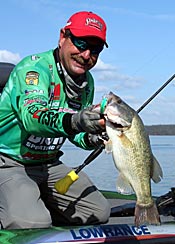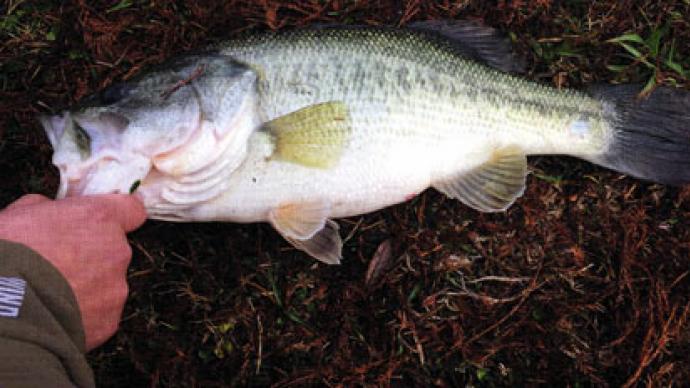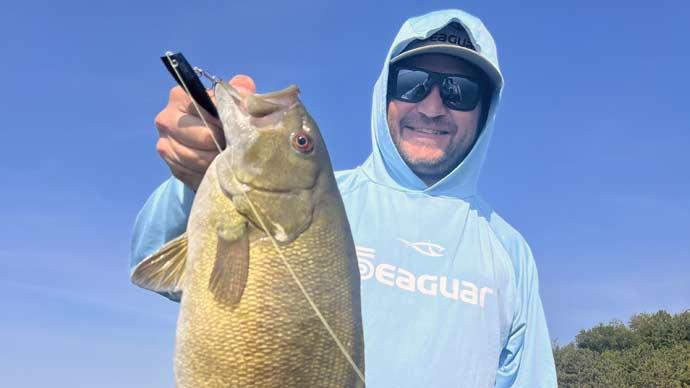
If you had only one bass fishing lure to use in your next tournament season, what would it be? Would you choose a worm, spinnerbait, topwater, or something else? They all have advantages and disadvantages at certain times of the year.
If I could only choose one, it would have to be a crankbait. It's not my favorite way to fish, but for tournaments I strongly believe that it is the most versatile and productive of all lures.
The crankbait can be fished anywhere. You can fish it on top, everywhere in between and all the way to the bottom. You can even add weight to make them suspend. if you're fishing heavy cover with a crankbait with a large bill, the bill will act as a guard for the hooks. This is especially true if you'll cut off the bottom hook on the treble, which also makes it weedless.
These days there's no excuse for dull hooks either. There are several brands of hooks on the market that are better at holding their sharpness and you can replace hooks that don't.
Something a lot of anglers overlook is a split ring. These can get rusty and weak just like the hooks. Whenever one looks weak or worn, change it out. Don't let something simple, like a defective split ring, defeat you in a tournament. On crankbaits that don't have split rings such as Mudbugs, I'll add them. This helps to keep you from losing fish when they jump and try to throw the bait.
When fishing a deep-diver, I'll use one that actually goes deeper than the water I'm fishing. If I'm fishing in 10 to 12 feet then I'll use a crankbait that will run 15 feet.
Not all crankbaits will run as deep as they advertise. A good way to find out is to take the time to do some trolling and whenever you bait starts to hit the bottom, check to see how deep the water is and mark on the bait how deep it runs. To get an accurate idea of how deep your bait is running, only let out as much line as you can cast when testing the bait.
The lighter your line, the deeper your lure will go and if you'll run your rod tip down into the water, it will run about a foot or deeper than if your line is on the surface.
Learn the characteristics of the different kinds of crankbaits that you use. Plastic ones will be easier to throw than wooden ones, but by and large wooden ones have better action and more buoyancy than plastic ones.
Think about the action of the lures in reference to the application. Flat-sided cranks have a tighter wobble and will work better in cooler water. I've found that almost without exception a stop-and-go retrieve will out produce a steady one every time. In off-colored water, no matter what your lure color might be use one with rattles. In clear water, go with smaller baits and subdued hues.
If I have a crankbait that seems to really catch fish then I'll mark it and only use it in tournaments. Now it might only be confidence in that lure that makes it so good, but that's the best lure in my tackle box anyway. I probably will fish them harder and longer and in better areas than other baits, but so what if it works.
Probably the foremost reason I would choose crankbaits for tournaments is that on pre-fish practice days I can cover a lot more water than with other lures. So naturally the bass I find, I know will bite a crankbait and then I'll end up catching them on cranks during the tournament.
However, in tournaments you don't have to fish just one lure. That's the good part. The bad part is that we sometimes get stuck on one method and get in a rut. If you want to be successful in tournaments, or even just everyday fishing, you must be versatile in lure selection. But I do feel you must also excel in at least one of them. Whatever that is, for you, keep confidence in the bait. For me that just happens to be a crankbait.
Good luck and I hope to see you on the water.
Bill Wilcox is sponsored by Ranger Boats, Yamaha Outboards, MCMC, BG Products, Pro Rule, Johnson Fiberglass, Brown's Automotive, Continental Batteries, Kistler Rods, Swamp Hog Lures, Strike King Lures, and Fun-n-Sun Sports Center.




